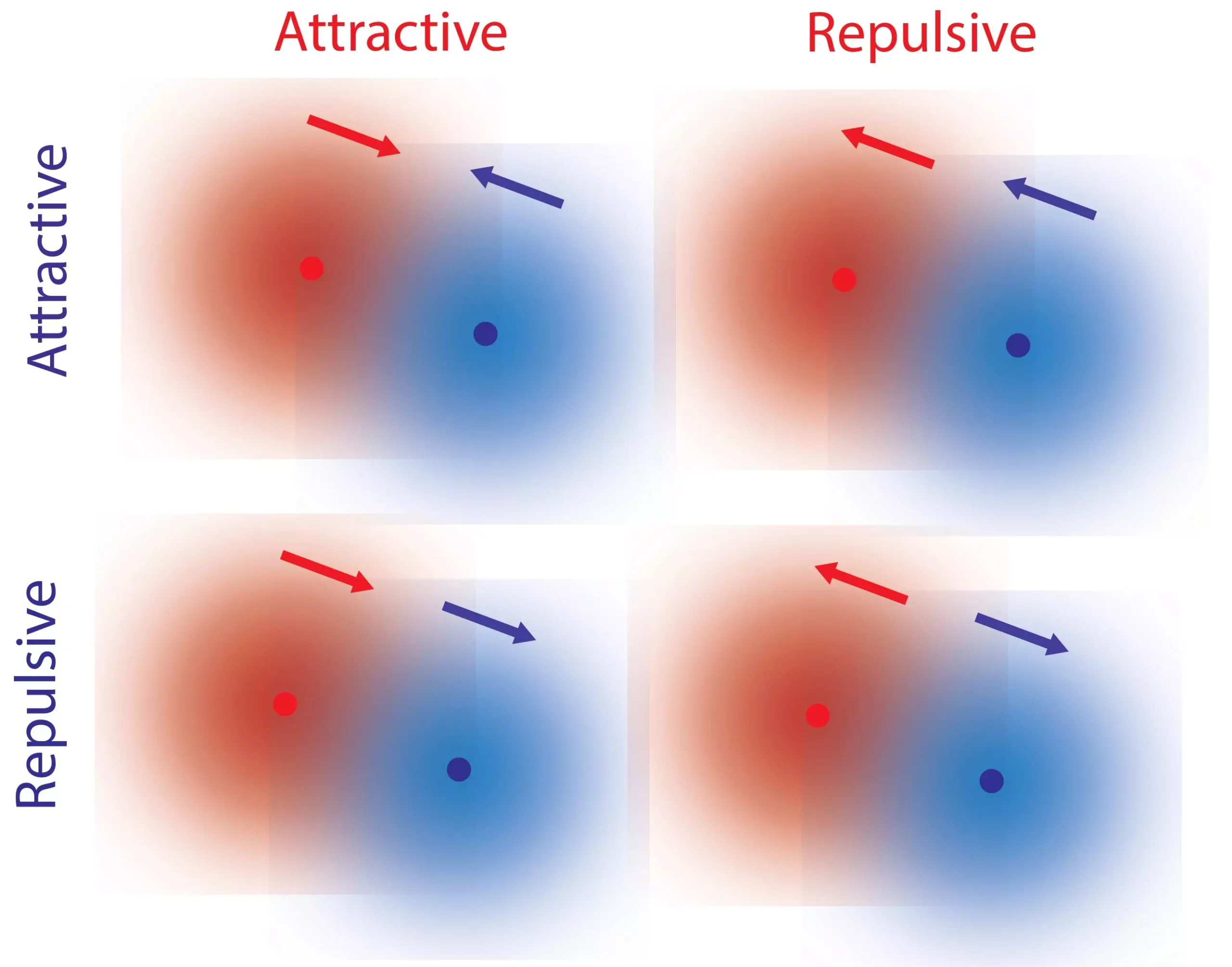Recent research conducted by scientists from the University of Maine and Penn State has shed light on non-reciprocal interactions between molecules. Unlike fundamental forces such as gravity and electromagnetism which are reciprocal, non-reciprocal interactions are vital for complex behavior observed in living organisms. This article aims to analyze the findings of this research and explore the implications of non-reciprocal interactions in various fields of science.
The Role of Hydrodynamic Forces
Until now, scientists believed that hydrodynamic forces explained non-reciprocal interactions between single molecules. However, the research published in Chem introduces a different mechanism. Dr. R. Dean Astumian, a theoretical physicist from the University of Maine, along with collaborators Ayusman Sen and Niladri Sekhar Mandal from Penn State, propose that local gradients of reactants and products play a crucial role in these interactions.
The Mechanism of Non-Reciprocal Interactions
The authors discovered that a property called kinetic asymmetry controls the direction of response to a concentration gradient. This property, specific to enzymes, allows one molecule to repel another while attracting a different molecule. The “Eureka moment” occurred when researchers realized that kinetic asymmetry can undergo evolution and adaptation, making it a significant factor in the growth of complex matter.
Prior studies conducted by different researchers laid the foundation for understanding non-reciprocal interactions, leading to the emergence of the field known as “active matter.” However, these studies introduced these interactions through the incorporation of ad hoc forces. In contrast, Mandal, Sen, and Astumian established a molecular mechanism that explains how non-reciprocal interactions can occur between single molecules.
Applications in Biomolecular Machines
Not only do non-reciprocal interactions have implications for understanding the origins of life, but they also play a vital role in Biomolecular Machines. The kinetic asymmetry responsible for non-reciprocal interactions has proven to be crucial in determining the directionality of biomolecular machines. This knowledge has influenced the design of synthetic molecular motors and pumps.
The collaboration between researchers Astumian, Sen, and Mandal aims to uncover the organizational principles behind the loose associations of various catalysts. These associations may have formed the earliest metabolic structures that eventually led to the evolution of life. Understanding kinetic asymmetry could provide insights into how complex life evolved from simple molecules, and this area of research offers promising opportunities for further exploration.
The discovery of non-reciprocal interactions between molecules opens up new avenues for scientific exploration. By understanding the role of kinetic asymmetry and the mechanism by which molecules interact non-reciprocally, scientists can gain insights into the complexities of living organisms and the origins of life itself. Further research in this field promises to deepen our understanding of fundamental biological processes and could have far-reaching implications in various scientific disciplines.



Leave a Reply